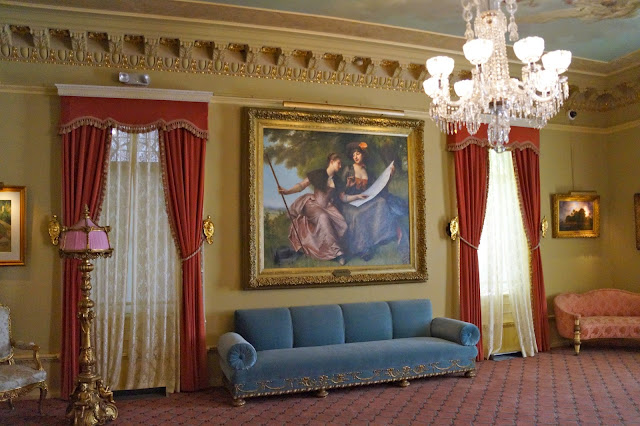Now we were really heading north up the East Coast. This was the beginning of a completely new experience since we had never been anywhere in the eastern US north of Florida. Many of the villages, towns, cities and rural areas have been settled for three and four hundred years. We have always lived in Western Canada where really old is 150 years.
We have been to Europe where history is many hundreds, sometime thousands of years old. Now it was time to learn about places only a few hundred years old.
When Savannah, Georgia was first settled in 1733 it was intended to provide natural resources for England and be a military buffer zone between Spanish Florida and English South Carolina.
The Yamacraw Indians were friendly and open to settlement and trade.
The basic component of the new town was a square comprised of 8 blocks surrounding a park. The blocks would be used for residential, civic and commercial structures. There were four squares initially which grew to twenty-four over time. The city and its residents treasure the twenty-two squares remaining today. They are beautifully maintained with many statues and plaques honouring prominent citizens during Savannah’s history.
This fountain in Forsyth Park was purchased from a mail order catalogue in 1858.
The Charter for the new colony prohibited slavery, lawyers, Catholics and hard liquor.
The prohibition against lawyers was intended to encourage residents to settle disputes one on one. That didn’t work and lawyers gradually settled in the city. Savannah lawyer George Walton was one of the signors of the American Declaration of Independence in 1776.
The prohibition against hard liquor was difficult to enforce. This “punch” was served at military special events.
The prohibition against Catholics was due to the concern that Spanish Catholics might be more loyal to Spain than England. By the late 1700s French émigrés fleeing revolutions in France and Haiti found refuge in Savannah. In 1850 the Church of St. John the Baptist became a cathedral.
In 1987 this magnificent pipe organ was installed. It has 34 ranks and 2,308 pipes and is built along the lines of a 16th century German organ.
Installed in 1900, the stained glass windows depict scenes from the life of John the Baptist.
The prohibition against slavery in Georgia was intended to foster small, self-sustaining, local farms and businesses. However, slavery was legal in South Carolina and Charleston was flourishing.
Eli Whitney did not invent the cotton gin. He did, however, invent a new type of cotton gin, which used wire teeth to pull the seeds from the cotton, rather than rollers that squeezed the seeds from the cotton. By the early 1800s, 41 million pounds of cotton were exported from the south. The rapidly expanding cotton crop created great wealth for the planters and great demand for more slaves to plant and harvest it.
Savannah residents discovered how fertile their ground was for cotton and rebelled against the decree prohibiting slavery. It was lifted in 1750.
The Owens-Thomas house is an example of high-style architecture built in the 1820s for wealthy plantation owners.
The dining room was very elegant with recessed lighting above the sideboard – a very modern effect.
In 1808 the U.S. Congress banned the importation of African slaves. This resulted in more concern for the care and housing of the existing slave population as illustrated by the Owens-Thomas Carriage House. Household slaves occupied one side and the stable and hayloft were on the other side.
The slave quarters had cross ventilation and fireplaces on both floors.
Life for slaves was better but still hard manual labour and no freedom.
In 1832 George Owens paid taxes on 9 slaves. At his death in 1852 Owens owned 67 slaves valued at $8,625. After real estate, slaves were the most valuable possessions a 19th century American could own.
The Cotton Exchange was the Wall Street of the South where the world price of cotton was set. Factors Row consisted of brick buildings along the Savannah River where cotton was bought and sold. Wagons of cotton were driven behind the buildings. Factors or brokers walked along Factors Walk above the wagons and evaluated the cotton, which was then stored in the warehouses below until it was shipped around the world.
Today Factors Row houses antique and gift shops, restaurants and offices.
Savannah Harbor has grown to be one of the busiest ports in the United States welcoming over 3,000 vessels a year.
Motion pictures such as “Midnight in the Garden of Good and Evil” and “Forrest Gump” have had a noticeable impact on the tourism industry in Savannah.
Since 1952 the Historic Savannah Foundation has saved and restored many heritage buildings, some of which are open to the public. Thanks to the diligence of the Foundation and many individuals and businesses Savannah has many stately, picturesque streets and parks.






























































